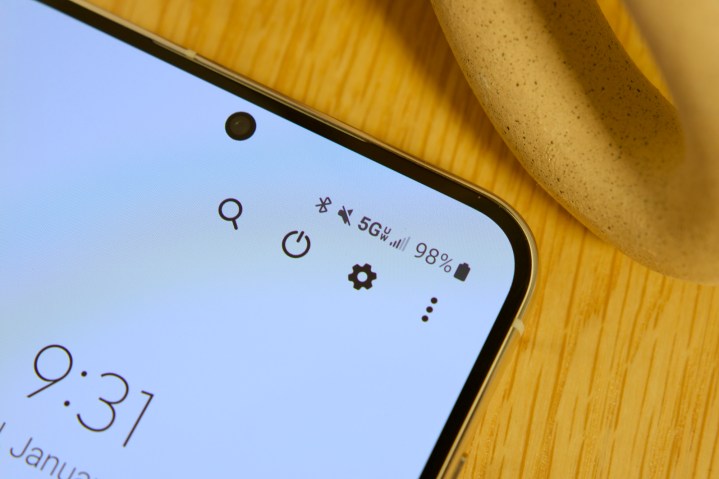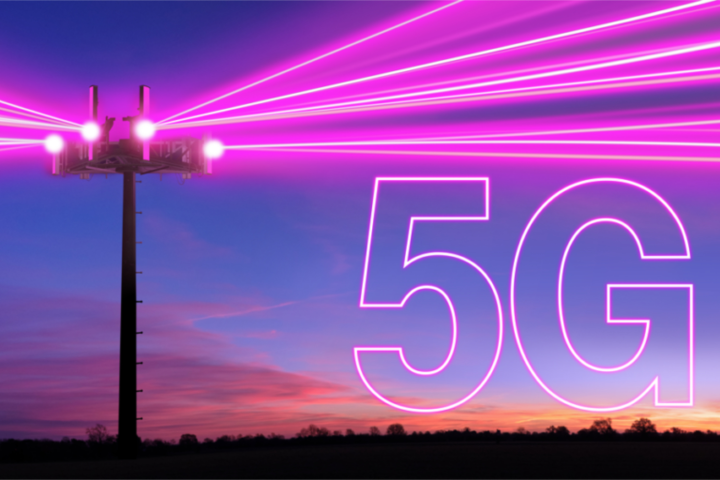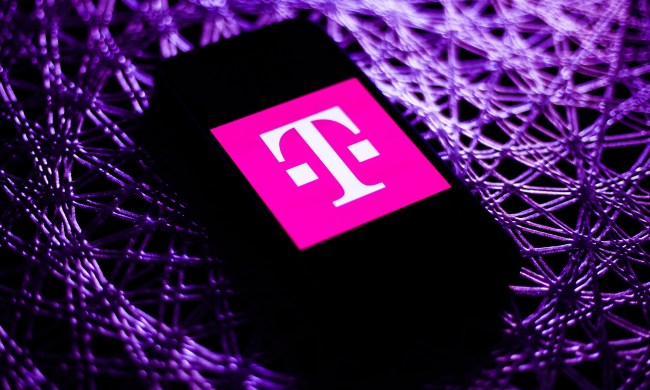
T-Mobile’s rivals may be nipping at its heels in the 5G race, but the Uncarrier is determined to stay ahead of the game. It not only boasts the fastest and most expansive 5G network in the U.S., but it’s actively working on technologies that will help it reach even greater peak speeds.
Two years ago, T-Mobile used a relatively new technique known as 5G Carrier Aggregation (5G CA) to achieve the kind of 3Gbps download speeds on midband frequencies that had previously been the exclusive domain of extremely high (and extremely short-range) mmWave technologies. Now, it’s chalked up another 5G first by taking advantage of the latest developments to shatter the traditional cap on upload speeds over sub-6GHz frequencies.
T-Mobile’s newest 5G record

The new technique is known as uplink transmit (UL Tx) switching, and it’s similar in basic principle to the 5G CA technique used to reach 3Gbps download speeds, except that it uses more channels to deliver more capacity.
However, UL Tx goes a big step beyond that. With 5G CA, T-Mobile combined multiple 5G channels across three discrete frequency bands from 1.9GHz to 2.5GHz to give it more bandwidth. UL Tx switching stands on the shoulders of those carrier aggregation technologies to combine different frequencies into a single uplink band, but then adds single-user multiple input, multiple output (SU-MIMO) to the mix to send multiple streams and seamlessly switch between frequencies to take maximum advantage of all the capacity that’s available across that entire spectrum.
To use the description from T-Mobile’s press release, “It’s like taking the 5G superhighway and adding new faster lanes with spare capacity for traffic to zoom faster than ever.”

The result is that T-Mobile has been able to achieve speeds of 345Mbps on its 5G standalone network, breaking its own previous record of 275Mbps that it announced less than a month ago.
The Uncarrier didn’t name the specific smartphone used to conduct the test, saying only that it was “powered by a flagship Snapdragon Modem-RF system from Qualcomm Technologies.” However, some might consider it telling that last month’s record was announced alongside the availability of the Snapdragon 8 Gen 3-powered Samsung Galaxy S24 lineup.
“This achievement is a testament to our relentless pursuit of innovation and our commitment to delivering an even better network experience to our customers,” said Ulf Ewaldsson, president of technology at T-Mobile. “Uplink transmit switching has the potential to significantly boost upload speeds and capacity, and we implore our partners around the globe to build the capability into the 5G ecosystem moving forward.”
The fastest speeds at the best range

What makes T-Mobile’s accomplishment so groundbreaking isn’t just the raw speeds it’s been able to achieve, but the fact that it’s done so using midband 5G frequencies.
We’ve long seen reports of 5G technology delivering download speeds of up to 4Gbps and upload speeds above 1Gbps. A mere 345Mbps may not seem that impressive by comparison.
The problem is that those blazing-fast speeds have traditionally only been available on mmWave networks, which operate at extremely high frequencies that typically run above 24GHz. This spectrum offers incredible capacity, but also has a range of about a city block.
There’s an inverse relationship between range and capacity; as frequencies increase, so do speeds, but the range goes down. On the other end of the spectrum from mmWave, low-band 5G can reach for miles, but you won’t get speeds that are much better than what 4G/LTE can deliver.
That’s why the midband frequencies — the ones from 2GHz to 6GHz — have long been considered the sweet spot for the future of 5G. These are also sometimes referred to as C-band spectrum, although that’s not entirely accurate, as the C-band frequencies make up only a tiny portion of that spectrum, specifically a 3.7GHz to 3.98GHz slice in the middle. C-band is used mainly by Verizon and AT&T, while T-Mobile has set up its base camp in the 2.5GHz zone.

The midband spectrum offers the best balance between range and capacity, but it’s also clear that speeds are beginning to plateau with the limitations of existing 5G technologies. That’s why T-Mobile has been aggressively experimenting with new techniques like 5G CA and UL Tx to change the rules and allow it to deliver unprecedented speeds that don’t sacrifice range.
In practical terms, this means the same towers that T-Mobile has deployed today could someday deliver speeds that rival the best mmWave networks without the need to deploy the tens of thousands of additional transceivers necessary to blanket a densely populated city with mmWave coverage.



